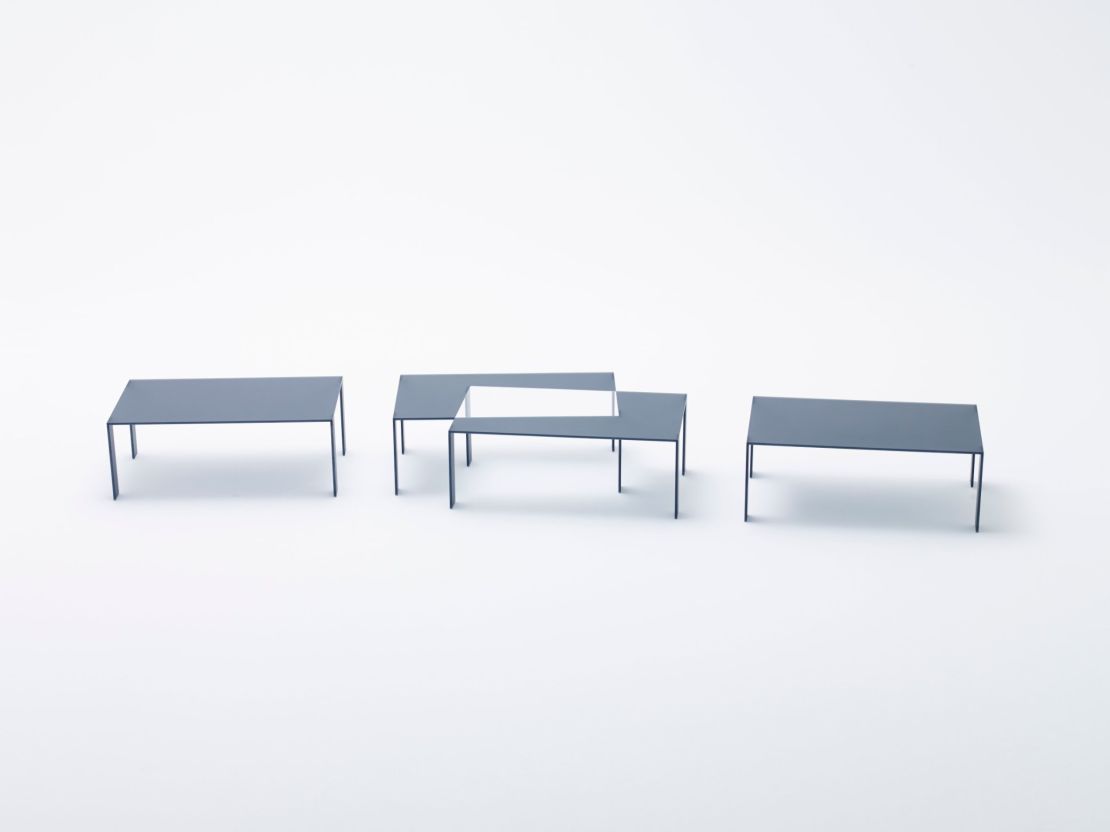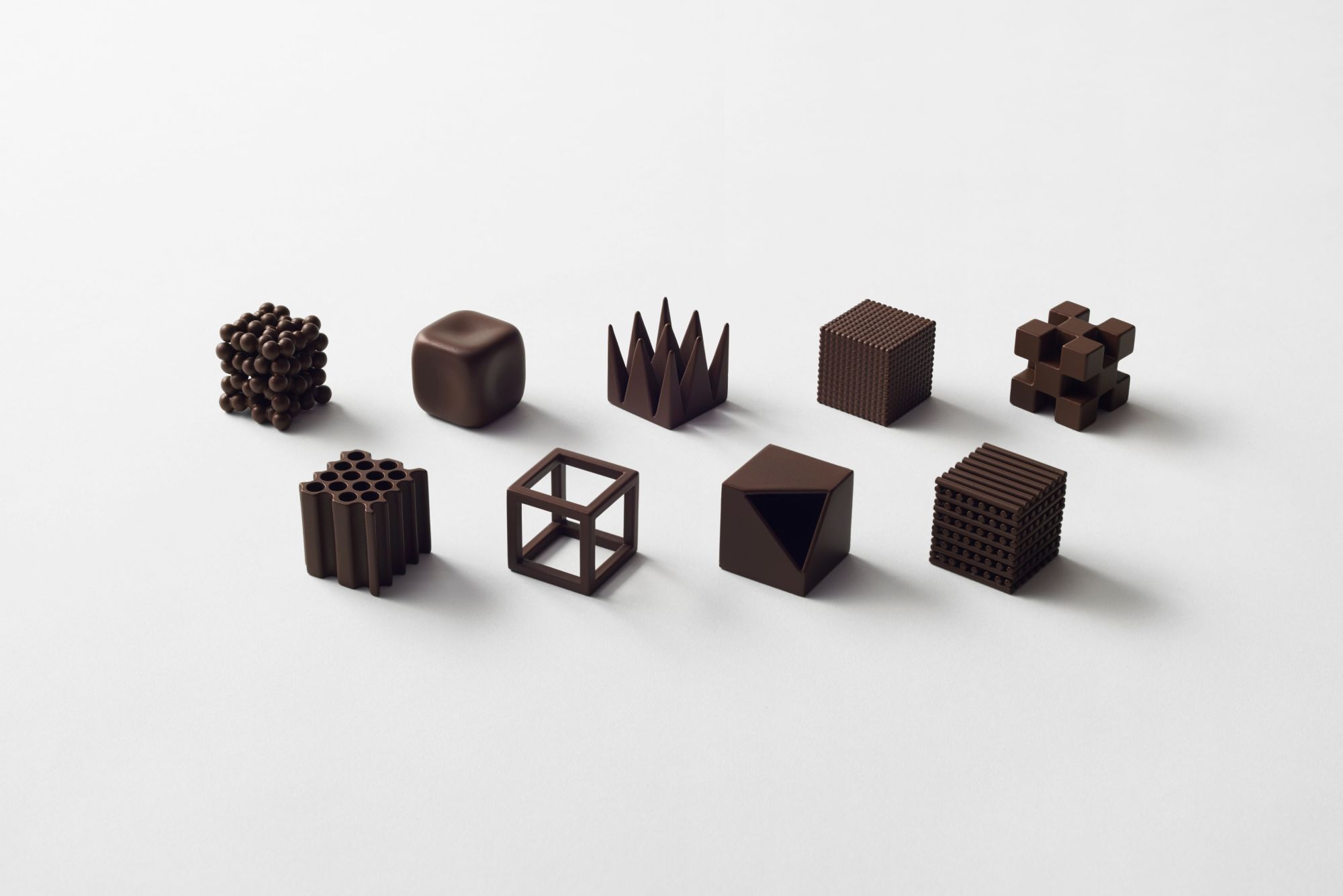Story highlights
Oki Sato is the Japanese designer behind the award-winning Nendo practice
The company mixes minimalism with a disarming sense of humor
They are simple designs. Yet simple descriptions are rarely enough to bring to mind the miniature moments of delight that Japanese doodler and prolific designer Oki Sato creates. Maybe that’s why Sato has done away with words altogether and taken to calling them ” ! ” moments.
They’re the ones that trigger a curious double-take. Like his bird box built for humans to nest in. Or the maplewood table that bears a uncanny resemblance to Winnie the Pooh. Or that ice cream cake topped with a tiny huddle of chocolate cottages, because Sato wanted to remind you to head home for the winter.
In 2015, Sato’s 13-year-old practice, Nendo, has hit a new stride. The studio was named Designer of the Year in January at the Maison&Objet design fair in Paris and Sato is working on a reported 400 projects. Despite the flush schedule, each project maintains a certain quality – a shared sense of humor, maybe – that makes them unmistakeably Nendo.
For the practice, whose name translates as “clay” – of the playful, Play-Doh, modeling variety – each project grows from a small idea, or mini narrative: “That explains why all our designs have something very Nendo-like,” says 37-year-old Sato. “It is about what kind of story you can find behind the object, whether it’s product or architecture.”
Now averaging over 100 product releases each year, for clients including Glas Italia, Tod’s, and their own by | n range for Japan’s Seibu department stores, scarcely a week goes by without the internet’s design blogs twinkling with some new, clever, cute, and characterful creation from the studio.
Here, Sato explains how he keeps design simple, spontaneous and fun in a world of high pressure and unrelenting deadlines.
CNN: When you approach a new area – designing chocolates, perhaps – what’s the first step in the creative process?
Oki Sato: I come up with my ideas from everyday life. Small differences hidden within the normal routine. They all become small starting points for all my projects. The smaller the better, to let it sneak into people’s minds and emotions.
Can you give an example of a “!” moment?
It’s all about emotions; small emotions. When I was a student studying architecture, I was taught to see things from a very high point of view. So when I designed a cup, for instance, I had to see the city first, and then think about how the building should be designed, and then think about how the room should be designed, and thinking about the furniture and then … therefore I will design this cup – that was how I had to think about it.
Now I’m thinking totally the opposite way – I start from very small emotions, small ideas and let it grow into furniture and interiors and buildings and hopefully into cities.
For example, we released a table named “clear shadow” for Glas Italia (for) this Milan (Expo). I came up this idea when I washing my face one morning in a hotel.
I noticed that there was the shadow of the bubbles on the water. It was really interesting even though I couldn’t see the bubbles themselves. Then I thought up the design of the table.
Do you think design can sometimes be too serious?
I like my designs very simple. But I don’t want to make them cold. It needs a pinch of humor or friendliness.
How do you keep a sense of spontaneity and fun in your designs, even when expectations are now so high, and when deadlines must arrive almost daily?
I’ve noticed that routine work in everyday life really helps me and works to my design. If you keep on repeating things every day you notice the small differences, and I feel those small differences become my design sources in a way.
Does working on a huge range of projects, with different clients, encourage experimentation?
Every project is different and it excites me every day. I believe that when we work on many different fields, they influence each other. It’s a way to not focus on certain things and to be able to find new ideas within different projects.
The reason why I work on so many projects is I feel that the more output I have, the more input I can have. The more ideas I deliver, the more it creates a flow that makes me able to find new ideas. It’s like a top that is stable when it’s spinning fast but will fall over when it slows down. It’s important to keep on spinning so that your mind is always ready for new ideas.
It’s like a flow, like breathing. It is like breathing or eating.
You’ve said you believe ordinary users are becoming more in tune with the creative arts. Do you think that design will become more about giving users a platform to express their own creativity?
I think such a trend will continue. In this sense, designers will be evaluated based not only on the “quality of the finished form of the design” but mainly on the 2 points which are whether “the concept is expandable (can be developed)” and “how the options can be presented with a certain balance”.

Do you aim to create products where users will feel they contributed something to the final “look” as well? How else can design make a product feel “personal”?
I believe that users can influence the final “look” and this itself could make a product feel “personal”. Such an example would be the conscious use of the patina of materials and details.
One of the challenges I think is how to express in a design the sense of how something decays beautifully and not deteriorate through use and hence it will gradually become personal.
This is not limited to hardware, and is also possible with an interface, where by becoming accustomed to its use you can make it feel personal. The feeling of discomfort that someone who has been a long time user of iPhone may feel when they touch an Android device, or when an iPhone user touches someone else’s iPhone, are examples of how your own iPhone has “grown on you”.
Is there something – a product or something intangible – you would like to design, but haven’t yet?
What I feel that I want to design may not be so interesting as a project. I think the dream project in the true sense would be to be asked to create an object that is way beyond my imagination.
Can you sum up your design philosophy today?
I believe that the way of thinking about the design of a small piece of chewing gum or a house should be the same. Although the process is technically completely different, I try to design both scales in a similar way.
That explains why all our designs have something very Nendo-like. For me, the role of design is about solving things, about finding new solutions. Also, it is about what kind of story you can find behind the object, whether it’s product or architecture.
It is all the same to me.
In ten years’ time, what would success be for you and Nendo?
I’m focusing on what I’m doing at the moment. I’m very happy to be able to design things and continue as a designer.
